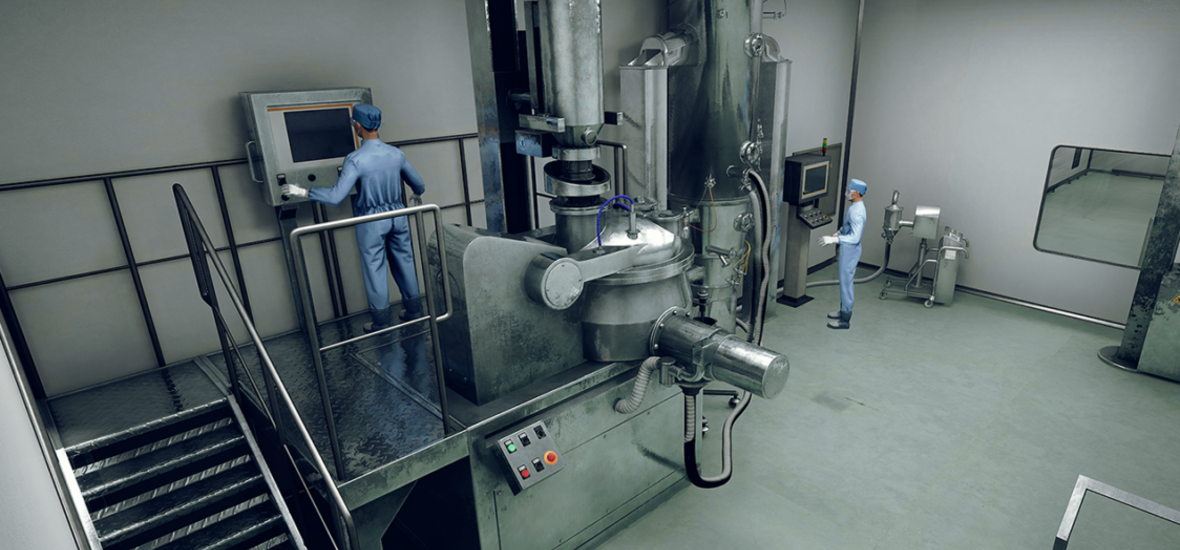
The "Virtual Factory 2.0" application allows the user to go through all stages of a real inspection of a pharmaceutical factory of solid dosage forms, from arriving at the enterprise and meeting with employees, ending with a complete inspection of production and storage facilities, equipment and the production process of solid dosage forms. Manufacturers of medicinal products for human use are periodically inspected for compliance with the requirements of GMP (Good Manufacturing Practice) rules. The inspection process includes inspection of drug manufacturing sites. The task of the inspector is to identify possible inconsistencies at each stage of the production process.
In order to reduce costs and increase the efficiency of the inspection, the customer was tasked with developing the Virtual Factory 2.0 application to train new employees and students of specialized universities, as well as to maintain the skills of experienced inspectors at a high level.
The "Virtual Factory 2.0" application allows the user to go through all stages of a real inspection of a pharmaceutical factory of solid dosage forms, from arriving at the enterprise and meeting with employees, ending with a complete inspection of production and storage facilities, equipment and the production process of solid dosage forms.

At each stage, the virtual employee explains the essence of the inspected process, points to its place in the context of the overall technological chain, and explains the nuances of the work of the company's employees.
Distinctive features of the Virtual Factory 2.0 system:

The hardware part of the system is a set consisting of a personal computer with installed software, virtual reality glasses and controllers for control.
When using the simulator, the image from the VR glasses can be broadcast to an external TV screen or projector, thus allowing the curator or a large audience of spectators to observe what is happening.
The program allows not only to train production personnel from scratch, but can also become a good simulator for maintaining a high level of management personnel competencies.
This is achieved, among other things, by automated random generation of inconsistencies, which eliminates the possibility of memorizing the correct answer options in each location of the virtual plant.
The objects that are generated by the system include labels, packaging of raw materials, documents with records of procedures performed, pressure and thermometer readings, and so on. An example of the operation of the system is the random generation of labels in the warehouse of raw materials and finished products. At the same time, the trainee may be faced with the task of determining whether the product is expired based on the date on the label, whether it is correctly placed within the warehouse and other locations of the simulator.

Research and experience have shown that adults learn best in an environment that offers them rich interactive experiences, the freedom to experiment and make mistakes without risk.
By being trained in such an environment, they will be better equipped to apply what they have learned when they return to their day-to-day roles in the enterprise.
Thus, the use of a virtual simulator not only increases the motivation of employees to improve their skills, but also allows them to really understand the consequences of incorrect actions where previously an employee simply followed established rules.

Separately, the following types of improvements to the application can be provided according to the individual technical specifications of the customer:
